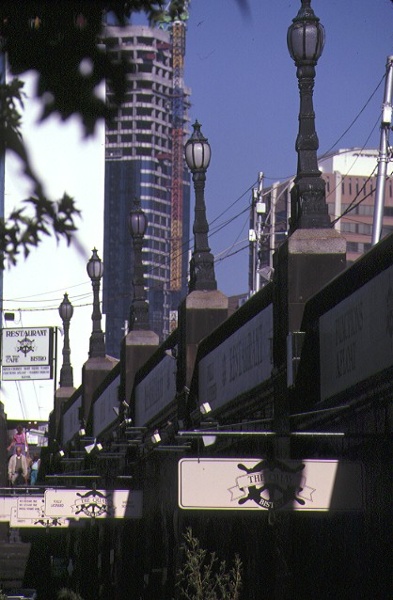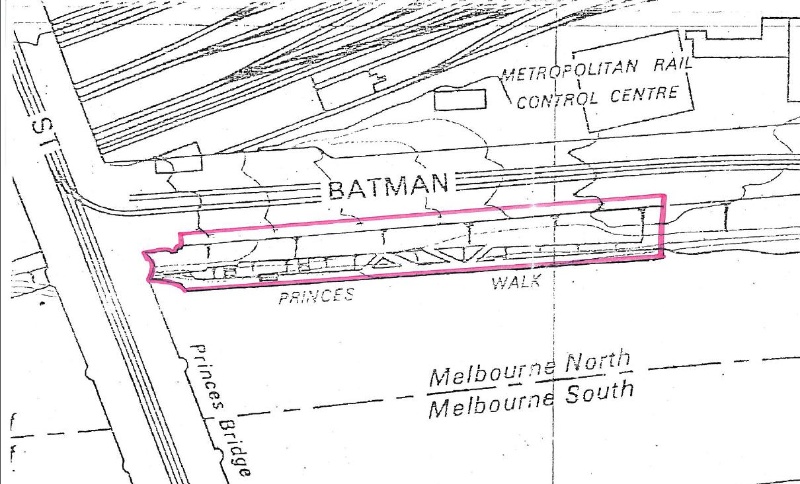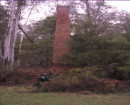PRINCES WALK VAULTS
1-9 BATMAN AVENUE MELBOURNE, MELBOURNE CITY
-
Add to tour
You must log in to do that.
-
Share
-
Shortlist place
You must log in to do that.
- Download report






Statement of Significance
What is significant?
The Princes Walk Vaults were constructed for the City of Melbourne in 1889/90 by AW Mckenzie. The vaults are part of the major works involved in the construction of the new Princes Bridge. The previous Princes Bridge, dating from 1850, had to be replaced as part of the widening of the Yarra River to deal with flood problems, and to deal with increased traffic from the southern suburbs. Construction associated with the vaults included the rail connection of the Princes Bridge and Flinders Street Railway stations, and the realignment of Yarra Bank Road, now known as Batman Avenue. The realigned road was carried up and over the vaults to intersect with St Kilda Road. The retaining wall is approximately 200 metres long. The twenty barrel vaulted cells with openings facing the river are constructed of brick and are faced in coursed rusticated Malmsbury basalt. The ten supporting piers are capped with Harcourt granite and support cast iron light standards designed in a similar fashion to those of Princes Bridge. The stairway design is from Grainger's original design for Princes Bridge.
How is it significant?
The Princes Walk Vaults are of historical and aesthetical significance to the State of Victoria.
Why is it significant?
The Princes Walk Vaults are historically significant as a major component of the engineering works undertaken in association with the construction of the new Princes Bridge. The Princes Walk Vaults are finely crafted with stone facing and designed in a manner to carefully integrate with the bridge.
The Princes Walk Vaults are aesthetically significant as a self-contained space divorced from the tumult of the Flinders Street Station and Swanston Street intersection above. The Princes Walk Vaults are an unusual and significant element of Melbourne?s varied urban environment.
-
-
PRINCES WALK VAULTS - History
History of Place:
The Princes Bridge vaults were constructed by A W McKenzie for the City of Melbourne in 1889-90. Contract drawings show that the vaults were designed to abut the bridge abutments. Batman Avenue was then known as Yarra Bank Road and was realigned when the bridge was constructed. The vaults construction as a retaining wall allowed the new road to be supported above. Sands & McDougall directories show that the vualts have been in almost continuous use by a variety of commercial and entertainment interests.
Contextual History:
In Melbourne punts were operating across the Yarra River at the city and Richmond in the late 1830s. In 1845 the Melbourne Bridge Co. was licensed to build an iron toll bridge below the present site of Princes Bridge, but could only raise enough capital to erect a wooden bridge. The company charged pedestrians crossing the river 1d each; cattle and horses 2d a head; horse and bullock drays 6d; and private carriages 1s each. The significance of such early developments was that they established main arterial routes for all time, regardless of future needs or sound engineering principles. By the time increasing traffic forced government authorities to intervene and build public bridges, the shape of cities and near suburbs had been determined by thousands of private decisions and accidents of fate .
The need for a bridge across the Yarra was recognised in the earliest days of the settlement, but not until 1845 was the first of the three Princes Bridges built to give a more direct connection for ships anchored in the bay. Until then, passengers and luggage were transferred to either flat bottomed barges or boats which put them ashore at Williamstown, leaving them an uncomfortable nine mile journey by horse or bullock dray to the settlement. Alternatively, passengers were loaded into small craft which took them about the same distance up the river. The quickest way was three miles overland from Port Melbourne, but only inadequate ferries were available at the river to take passengers across the main settlement on the other side .PRINCES WALK VAULTS - Permit Exemptions
General Exemptions:General exemptions apply to all places and objects included in the Victorian Heritage Register (VHR). General exemptions have been designed to allow everyday activities, maintenance and changes to your property, which don’t harm its cultural heritage significance, to proceed without the need to obtain approvals under the Heritage Act 2017.Places of worship: In some circumstances, you can alter a place of worship to accommodate religious practices without a permit, but you must notify the Executive Director of Heritage Victoria before you start the works or activities at least 20 business days before the works or activities are to commence.Subdivision/consolidation: Permit exemptions exist for some subdivisions and consolidations. If the subdivision or consolidation is in accordance with a planning permit granted under Part 4 of the Planning and Environment Act 1987 and the application for the planning permit was referred to the Executive Director of Heritage Victoria as a determining referral authority, a permit is not required.Specific exemptions may also apply to your registered place or object. If applicable, these are listed below. Specific exemptions are tailored to the conservation and management needs of an individual registered place or object and set out works and activities that are exempt from the requirements of a permit. Specific exemptions prevail if they conflict with general exemptions. Find out more about heritage permit exemptions here.
-
-
-
-
-
MITRE TAVERN
 Victorian Heritage Register H0464
Victorian Heritage Register H0464 -
MELBOURNE SAVAGE CLUB
 Victorian Heritage Register H0025
Victorian Heritage Register H0025 -
FORMER LONDON CHARTERED BANK
 Victorian Heritage Register H0022
Victorian Heritage Register H0022
-
'Lawn House' (Former)
 Hobsons Bay City
Hobsons Bay City -
1 Fairchild Street
 Yarra City
Yarra City -
10 Richardson Street
 Yarra City
Yarra City
-
-












